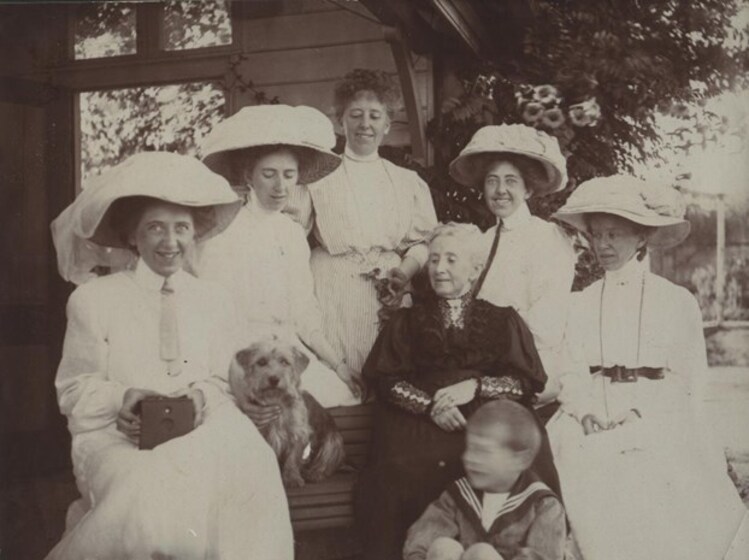The Leviny Sisters
Buda historic house and garden in Castlemaine is a remarkable archive of a family, occupied by two generations of the Leviny family over 118 years.
Ernest, who bought the house in 1863, and Bertha Leviny had 10 children, all of whom enjoyed a happy and privileged home life and received a well-rounded education, particularly in the arts. Five of the six Leviny daughters spent most of their lives at Buda, and the house and garden contains a rich legacy of their creative spirit.
Mary Florence, Beatrice Kate, Gertrude Olga Louise, Bertha Dorothy and Hilda Geraldine grew up at a time when women were being given opportunities for a higher education, and the Leviny girls were encouraged to do this. Their father’s wealth, resulting from his success in business on the Castlemaine goldfields, gave them choices in life, and they were under no particular pressure to marry or earn a living.
These five Leviny daughters remained single, giving them the freedom to pursue their creative interests in such things as painting, woodcarving, metalwork, needlework and photography. Some of their art and craft works were included in exhibitions, but it was mostly created for pleasure: to decorate and use in their home.
After Ernest’s death in 1905 the daughters commenced a redecoration of Buda in the Arts and Craft style. Victorian furnishings and fittings were replaced by simpler Federation-style details. Hand-painted friezes, decorative and useful items, soft furnishings, metalwork, embroideries, and beautifully carved furniture made by the sisters are still to be seen in and around the house at Buda.
It may have been considered an unusual lifestyle choice for young women in the late 1800s, but the Leviny sisters were part of a wave of change, resulting from early women’s rights activities at that time, which presented them with opportunities and choices. Their motivation, coupled with their financial independence, allowed them to pursue self-determined lifestyles. They continued to create works of art and craft well into the twentieth century with Dorothy, the most prolific artist of the sisters, still creating work in metals when she was in her seventies.
It was largely due to the foresight of last surviving sister, Hilda, that Buda was preserved as a house and garden museum when she sold the property to the Castlemaine Art Gallery in 1970. Her sisters, Mary and Kate, left a broader civic legacy through their involvement in establishing the Castlemaine Art Gallery in 1913, and assisting with the development of the gallery’s fine collection of prints in the late 1920s.
Text adapted from the booklet Buda and the Leviny Family, Lauretta Zilles (2011).



























